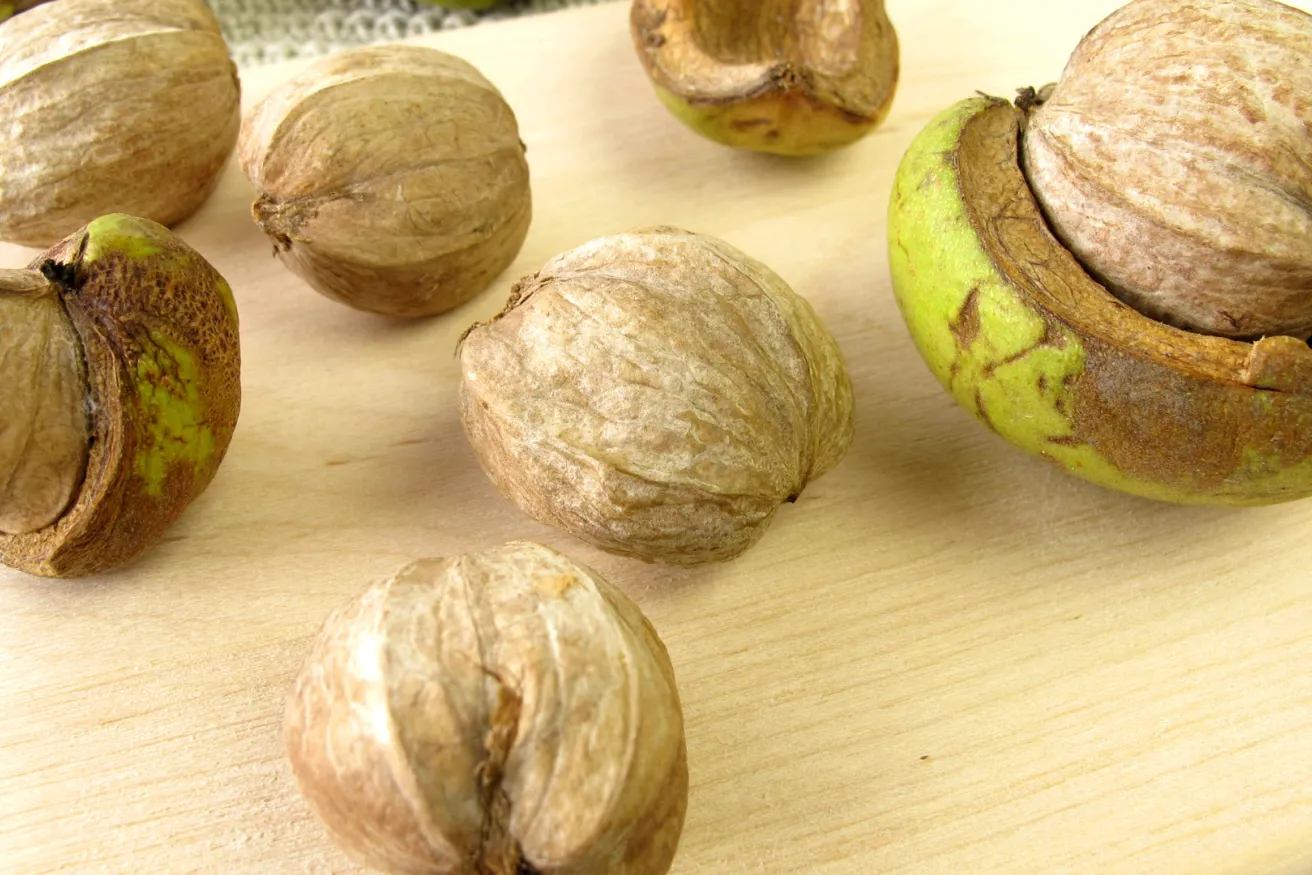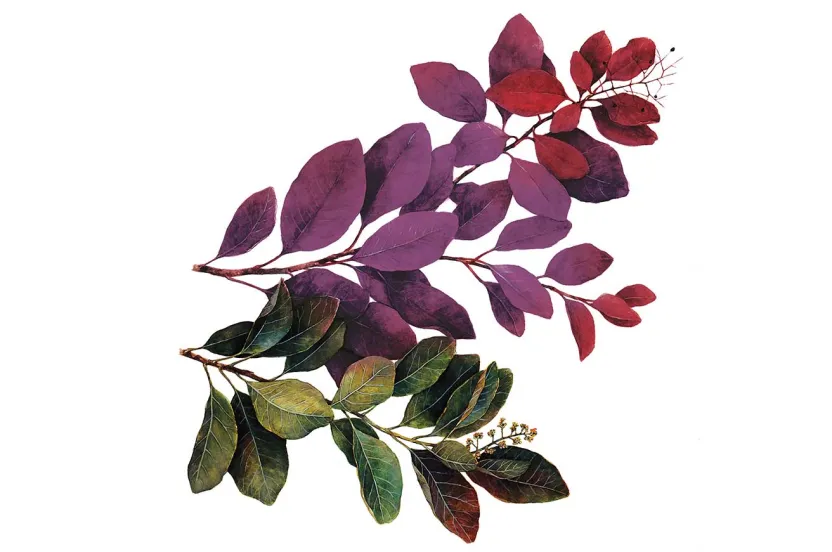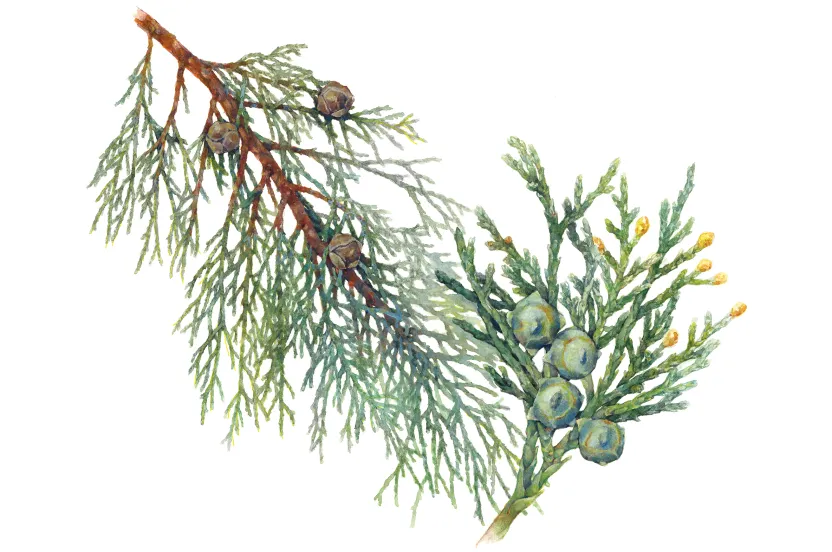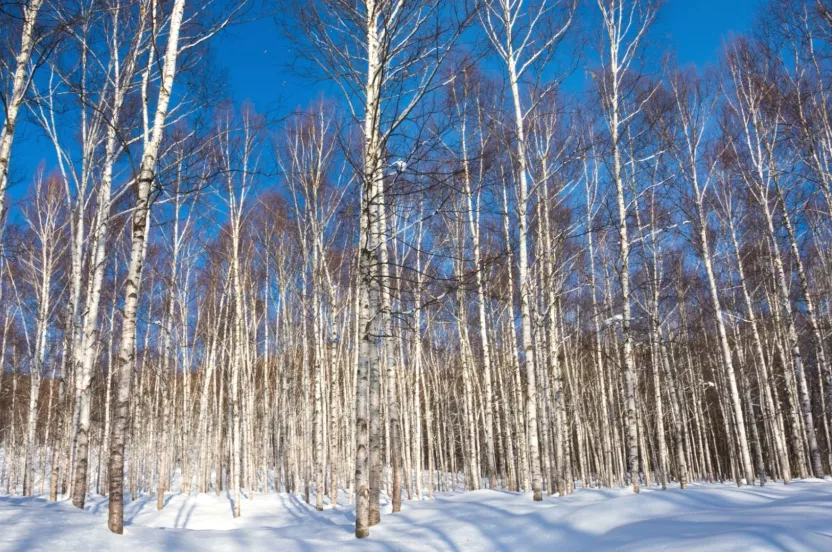Everything that is finest in the other Hickories is rivaled or excelled by the Big Shellbark. –Naturalist Donald Peattie
Carya laciniosa
Native to the United States, the shellbark hickory is a towering tree of notable statue. It was once a common tree found near the Midwest; it’s unfortunate that only a few historic Shellbark hickory trees are still left today, leaving it a threatened species. It was among the earliest trees settlers discovered when they first came to the country.
The word hickory comes from the Native word powcohiccora, which the English shortened to hickory based off the tree where the nuts come from. The scientific name, Carya laciniosa comes from the ancient Greeks. Carya is the word used for walnuts, and laciniosa refers to the shredded, deeply furrowed bark. The Shellbark is part of the broader walnut family. Other common names include bigleaf shagbark, kingnut, big shellbark, bottom shellbark and western shellbark. Regardless of what you call it, its beauty can be admired from every angle.
These splendors are naturally found in moist bottomlands and floodplains where their taproots can absorb lots of moisture. Hickory wood is extremely hard and heavy, weighing 42-52 pounds per cubic foot. It’s no wonder Natives used the inner bark of shellbark for snowshoe rims and for finishing baskets. Settlers used it for gunstocks, ramrods and tool handles. Shellbark hickory provided food, medicine and dozens of other useful products. To add to its appeal, these trees are long-lived, living as much as 200 years.
Shellbarks are slow growing, growing less than 12 inches a year and reaching 60-80 feet at maturity. Patience is encouraged if you plant a Shellbark, it takes anywhere from 10-12 years to bear nuts. Shellbark nuts are the largest of all hickories, with the husks on, the nuts average 1 ¾ to 2 ½ inches in length and 1/3 inch thick. To add to its grandeur, the leaves on this beauty stretch as much as 22 inches. There’s a lot to admire on the shellbark hickory.
Given its size, if you’re looking to bring this tree back to the forefront make sure you plant it somewhere where it has plenty of space to thrive. Although it is slow growing, the tree is low maintenance and doesn’t suffer from pests. The reward of its strong limbs and sweet nuts are worth the wait.




